Sept. 24, 2024
Louisa, Virginia, United States
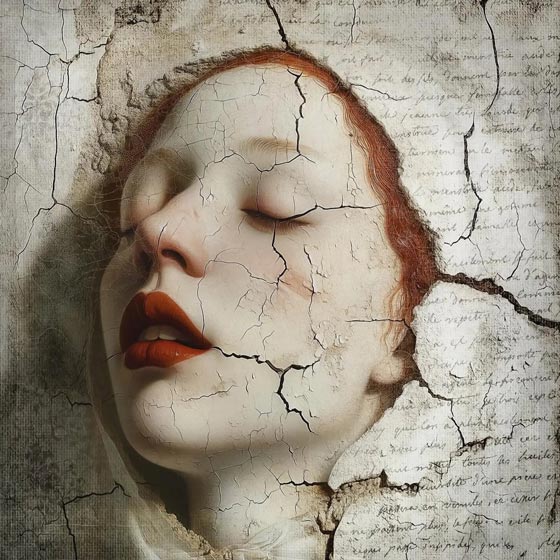
Sept. 24, 2024
Louisa, Virginia, United States
In a world where technology continues to shape the boundaries of creativity, Alisa Smith Williams stands at the crossroads of tradition and innovation. Rooted in a deep appreciation for medieval mythology and the influence of her father's classical artistry, Alisa has found a unique voice in the realm of AI-generated art. With Midjourney as her tool of choice, she seamlessly blends historical themes with modern technology, creating works that evoke both a sense of timelessness and the excitement of the unknown. For Alisa, the beauty of art lies in the balance between control and unpredictability, making her creative journey a truly fascinating one to explore.
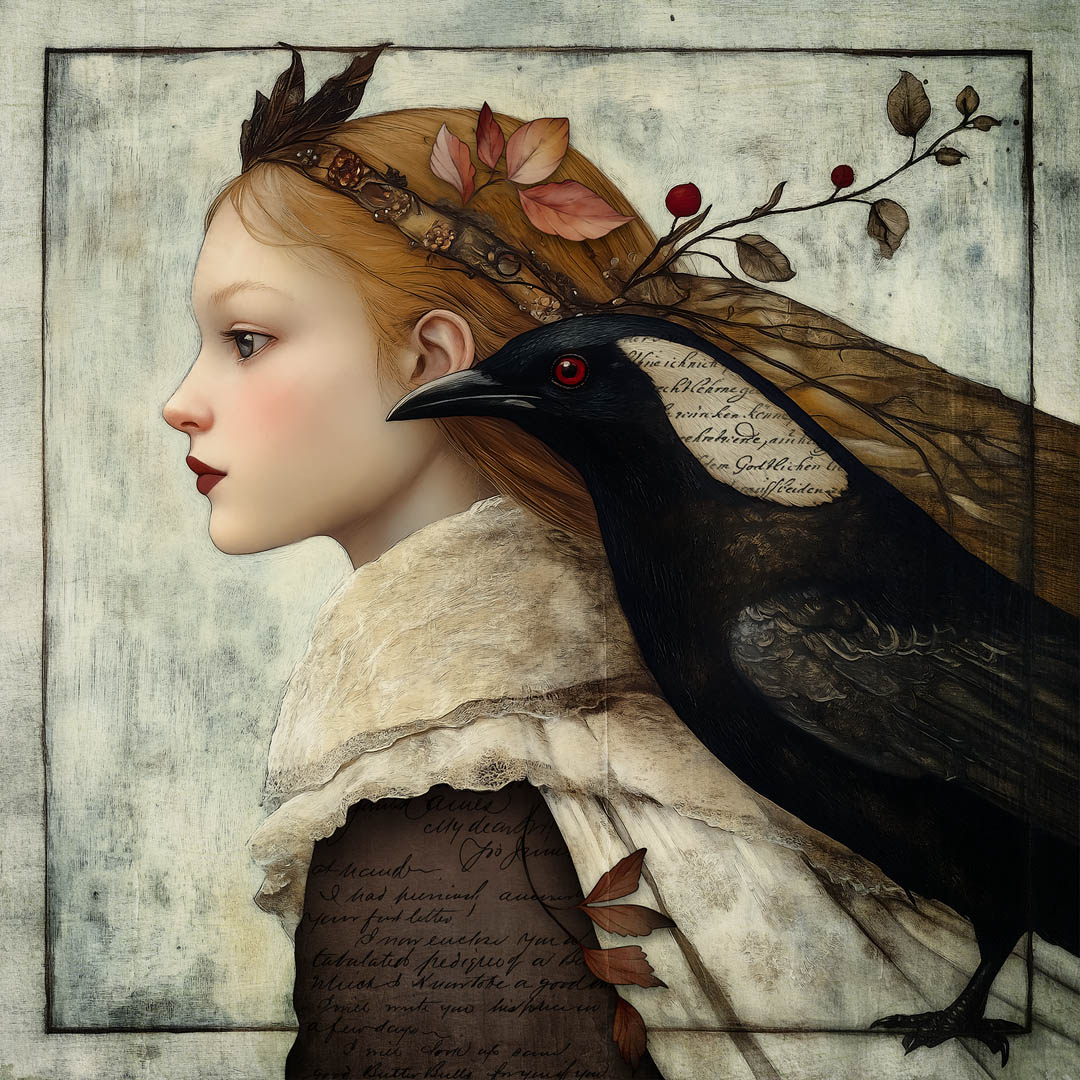
I love the interplay of medieval influences with later styles like pre-Raphaelite art.
I've had a long journey, starting with photography several years ago. Unfortunately, I learned in 2019 I had multiple myeloma, an immune cancer that attacked my bones and caused many fractures. I found I was no longer able to use my camera effectively, and needed some other outlet. Initially I found 3D art, but I never really felt it was my solution. Eventually I learned about Midjourney, and was on my way again. I was able to create the images I wanted from imagination and a desktop computer.
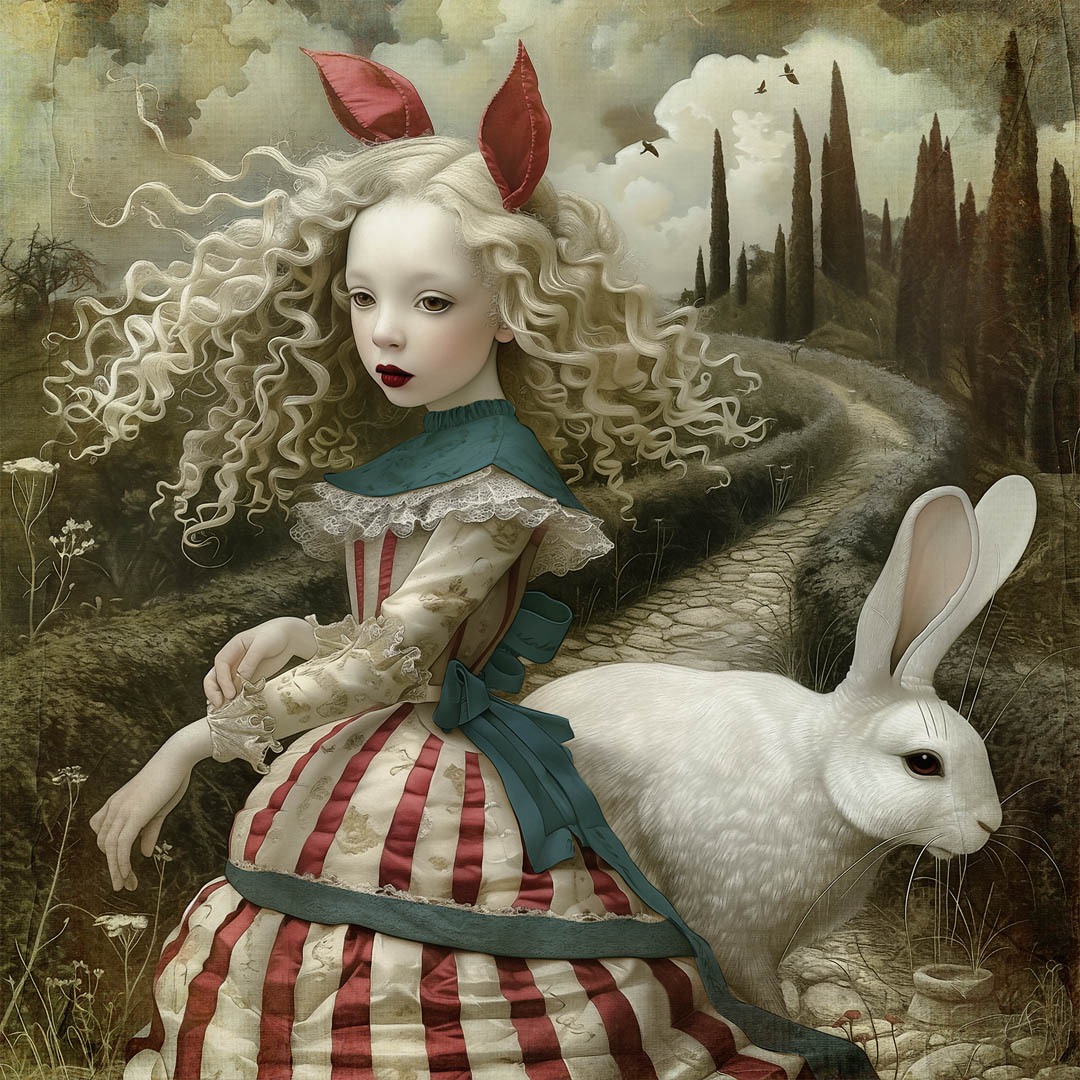
In my personal work, I like using very sparse prompts—often just a line from a song or a poem. There is a huge amount of serendipity in what comes out of those prompts.
My father was a tremendous influence. He was an amazing watercolorist. I think from very early on I was inspired by artists like N. C. Wyeth and John Waterhouse, but also by storybook artists like Edmund Dulac and Arthur Rackham. I love the interplay of medieval influences with later styles like pre-raphaelite art. And there are current influences. In AI art, I have so many friends I follow on Instagram, it would be difficult to list them all. Instagram is a tremendously supportive environment.
Things have evolved in huge ways. I always considered myself mainly an illustrator, with fairytale and storybook leanings. Recently I was asked to illustrate an edition of Alice in Wonderland, and that's on my desktop at the moment. But more than that, I think I've evolved to accept my strengths (and weaknesses) in a way that makes me a more aware artist. I learn more about who I am and what I have to say every day.
Well, the workflow depends on the requirements. In my personal work, I like using very sparse prompts - often just a line from a song, or from a poem. There is a huge amount of serendipity in what comes out of those prompts. If you are willing to wait, there is always something worth waiting for. I have a few favored artists I use for reference, but I would never want to usurp someone's style. Afterward there is always a lot of post work in Photoshop.
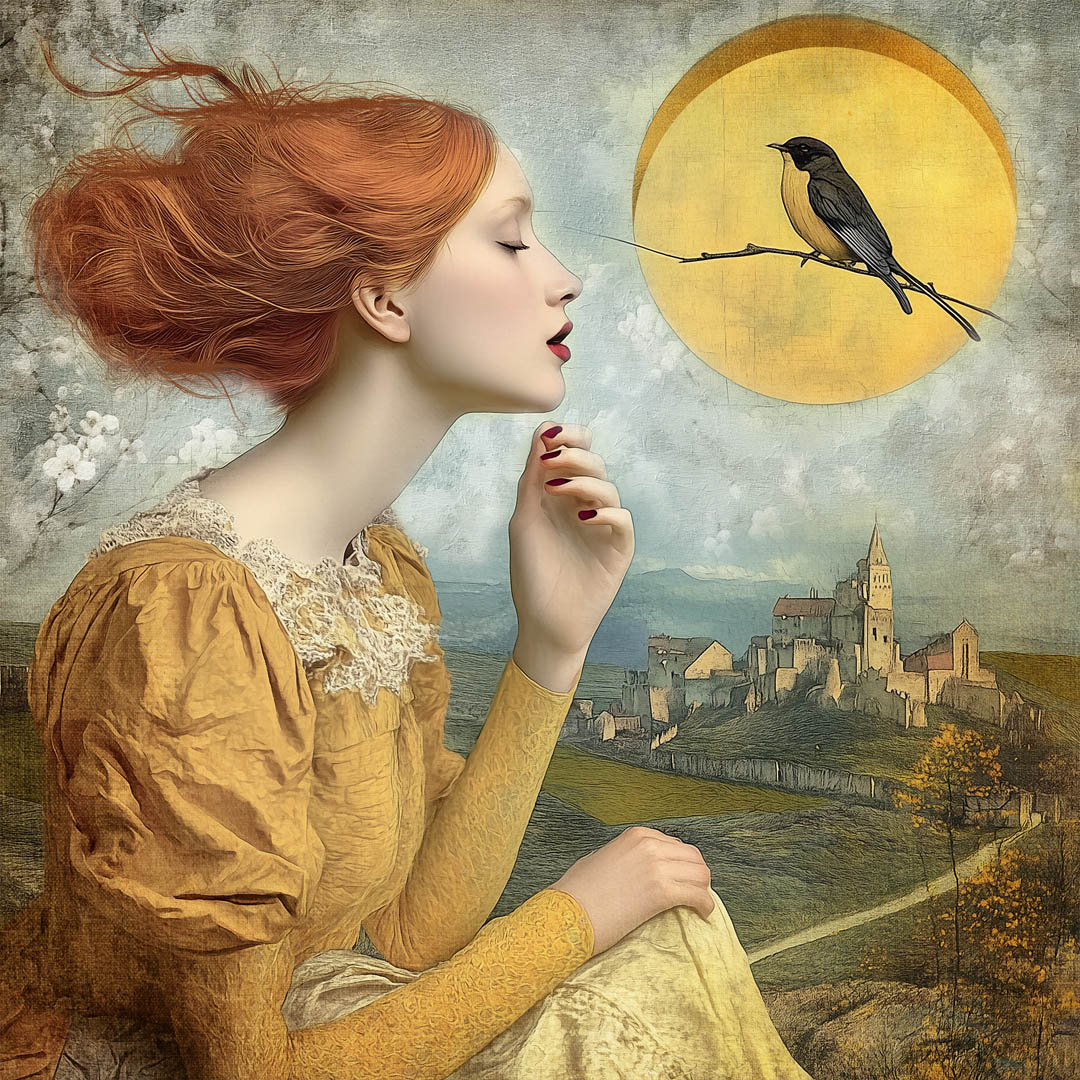
Unpredictability is the bomb! That's where the most interesting things come up.
A subject I love! As I said, when I'm working on my own material, less is more. I like using just phrases, evocative lines from poems or songs - minimalism. Once I get into a flow, it's often necessary to "tweak" the prompt, but I generally like to leave it as basic as possible. I usually include a few artist references, and some style guidelines (dark tones versus light, etc.).
Currently my biggest challenge is using "cref" with more than one character. There used to be a way to do that, using the in-painting feature, but it's been broken for a while now, and I'm not sure it will be fixed anytime soon. The work-around is crafting more than one image and compositing them in Photoshop. That usually requires a lot more work - making sure lighting and tone are similar, etc., and the outcome is often not quite the same. I'm hoping the Midjourney inpainting feature will be up and running again soon.
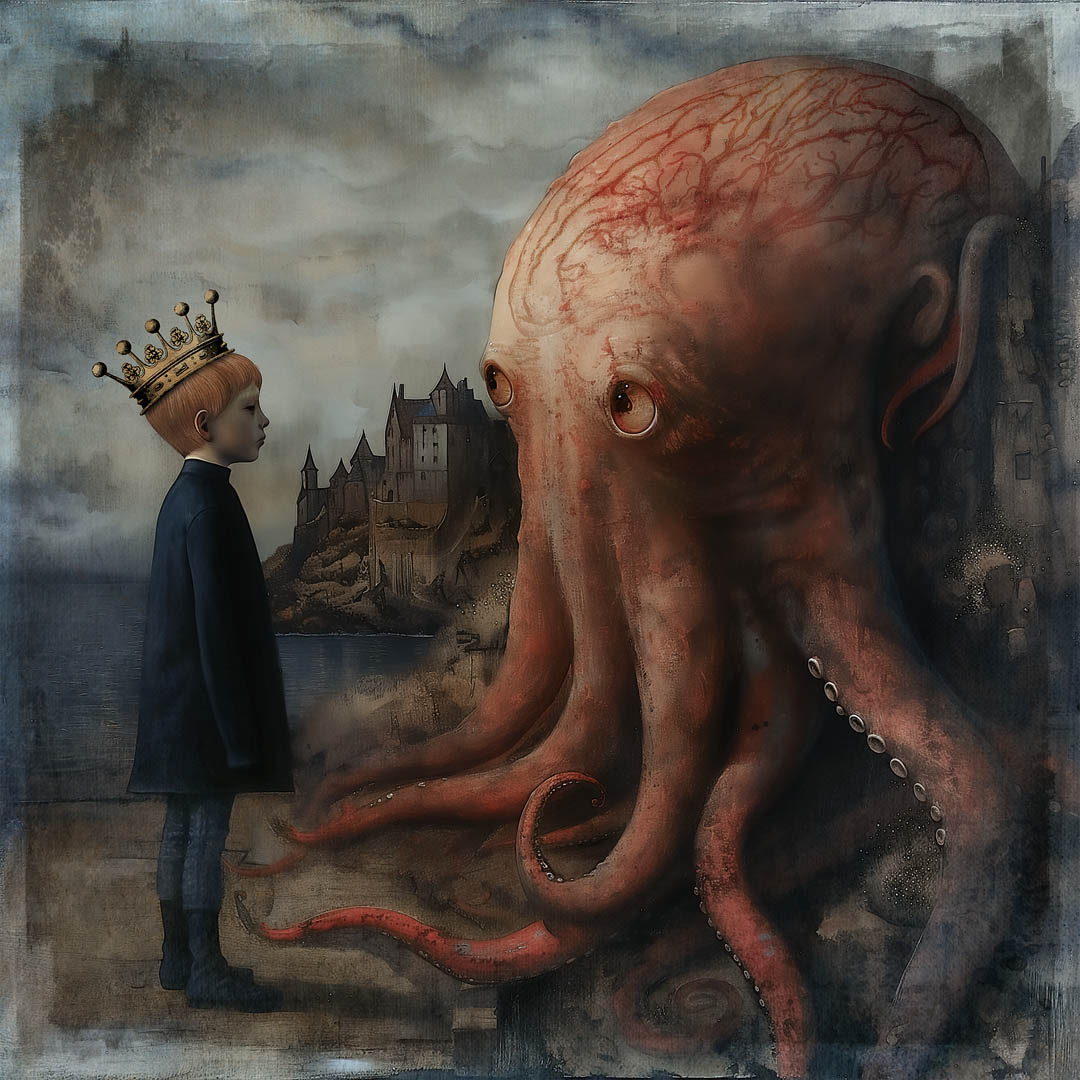
I love incorporating wildlife and botanical features, usually through collaging in post work.
Medieval. That's it in a word. I like bringing even modern ideas back to the Medieval period. Did I live back then in another life? No idea. Maybe. It's always just been a huge appeal to me. I love the style of Renaissance and Medieval artists, and the more recent pre-Raphaelite artists. It all works for me.
Generally I'm a portrait artist, but I love incorporating wildlife and botanical features, usually through collaging in post work.
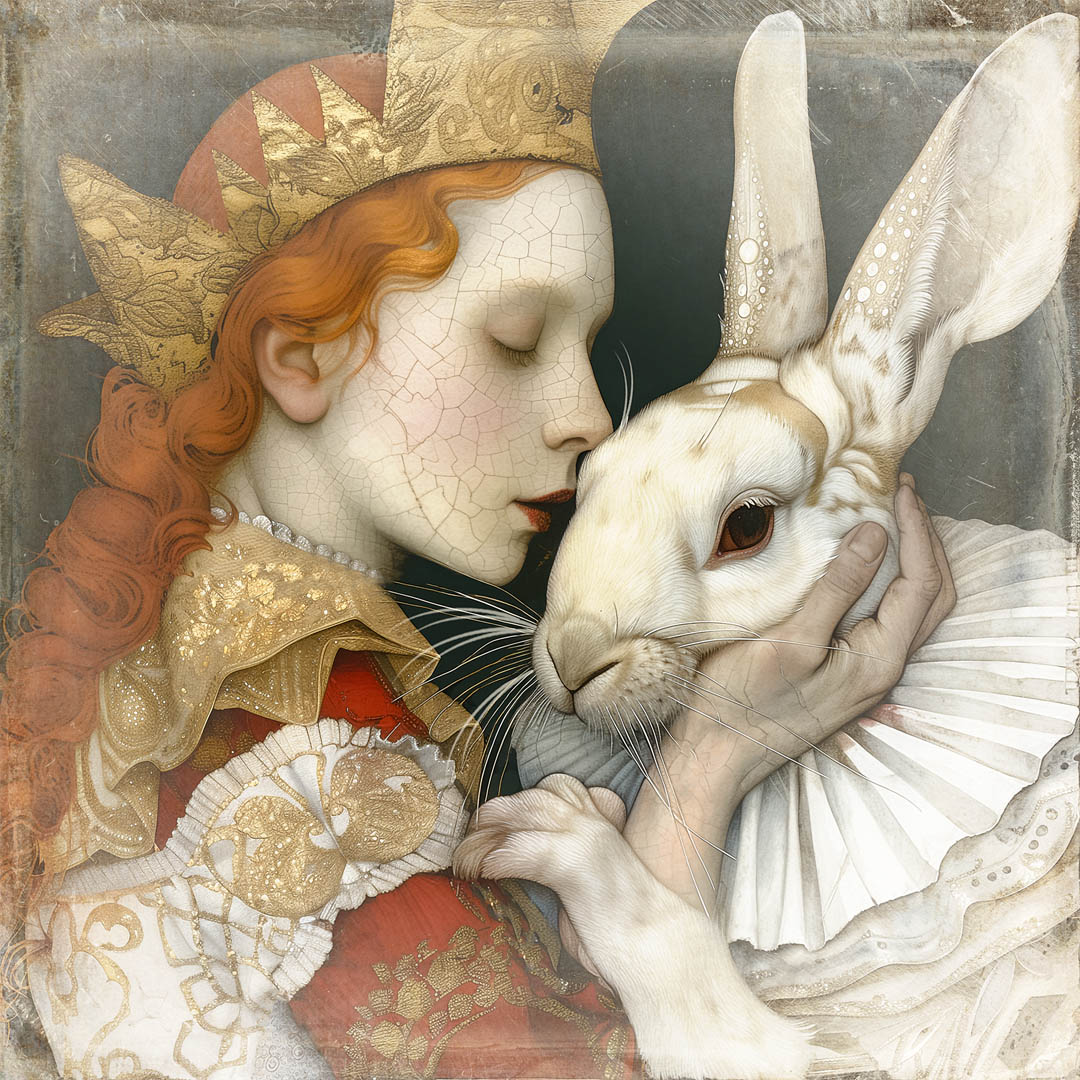
I've evolved to accept my strengths and weaknesses, making me a more aware artist.
Unpredictability is the bomb! That's where the most interesting things come up. In work that I do for others, it's an annoyance, granted. Recently I spent a week, literally, getting a single useful image for a book project. But in my own work, I always hope for those surprise events that make AI so worthwhile. I love those late-night images that are so special they keep me from getting back to sleep.
I like using cref. It's very helpful when you're working on a book project, for example. But even in my own personal work, it's wonderful to find a face that will carry forward through numerous different pieces. I've explored using the stylization and personalization commands, and I'm still working on these, but I still have not come up with the best results, for me. It's a work in progress.
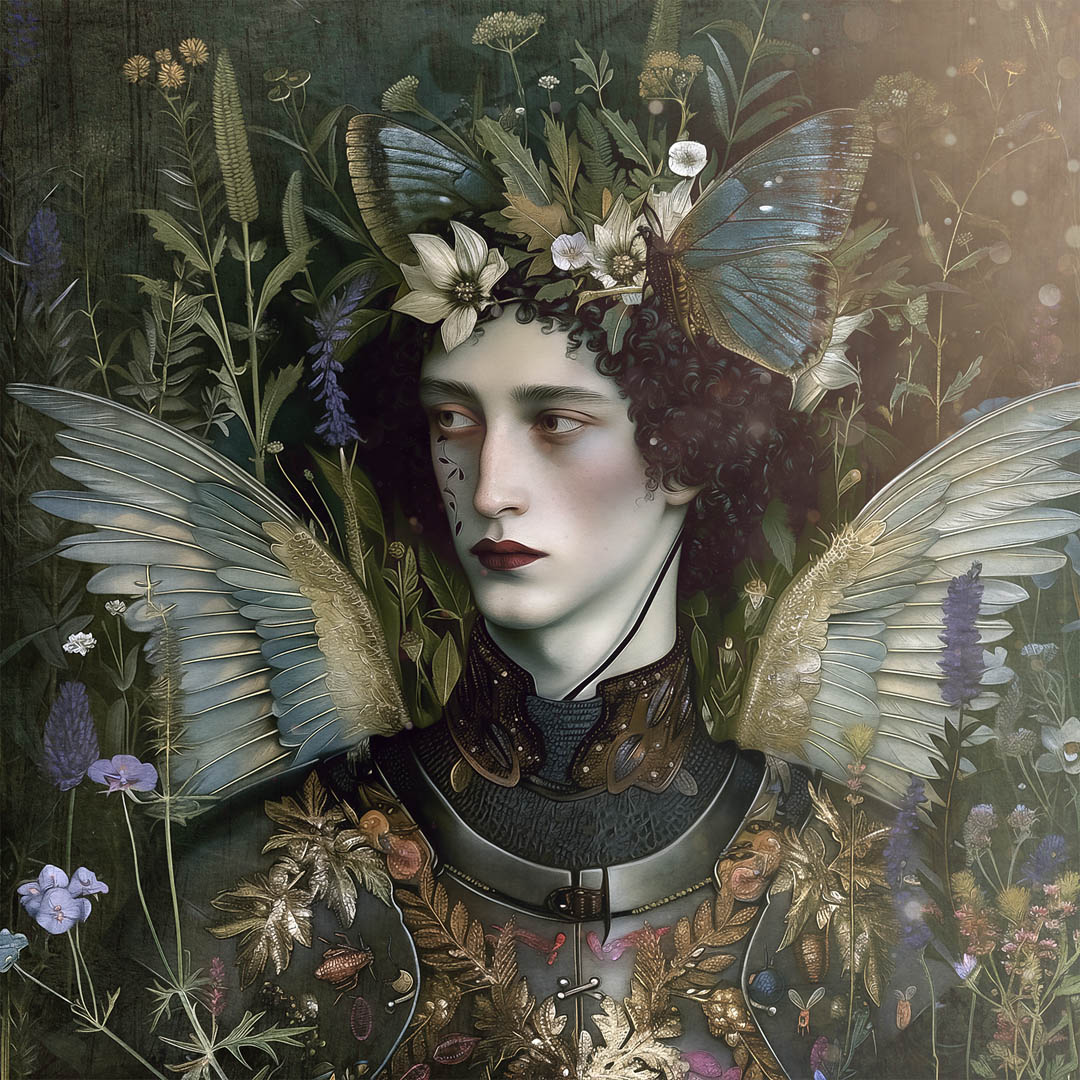
I try to limit myself to my own prompts and ideas. They wake me up in the middle of the night sometimes.
I think really the best tip of all is just to be dogged about what you're doing. It often takes hours and hours to get what you're looking for. Have some faith in your vison, modify the prompt if it seems necessary, and keep plugging away. I tend to stay away from the Midjourney "explore" function - a lot of people like that, but there is not much there that seems helpful to me.
A lot of what I do is post-processing in Photoshop - I think it's vital. Working with a Medieval style image, for example, color correction is a must. Things can just come out so muddy in Midjourney. I also like working with collaging in photoshop, and I'm fond of many (!) textural components and overlays that create an ambience.
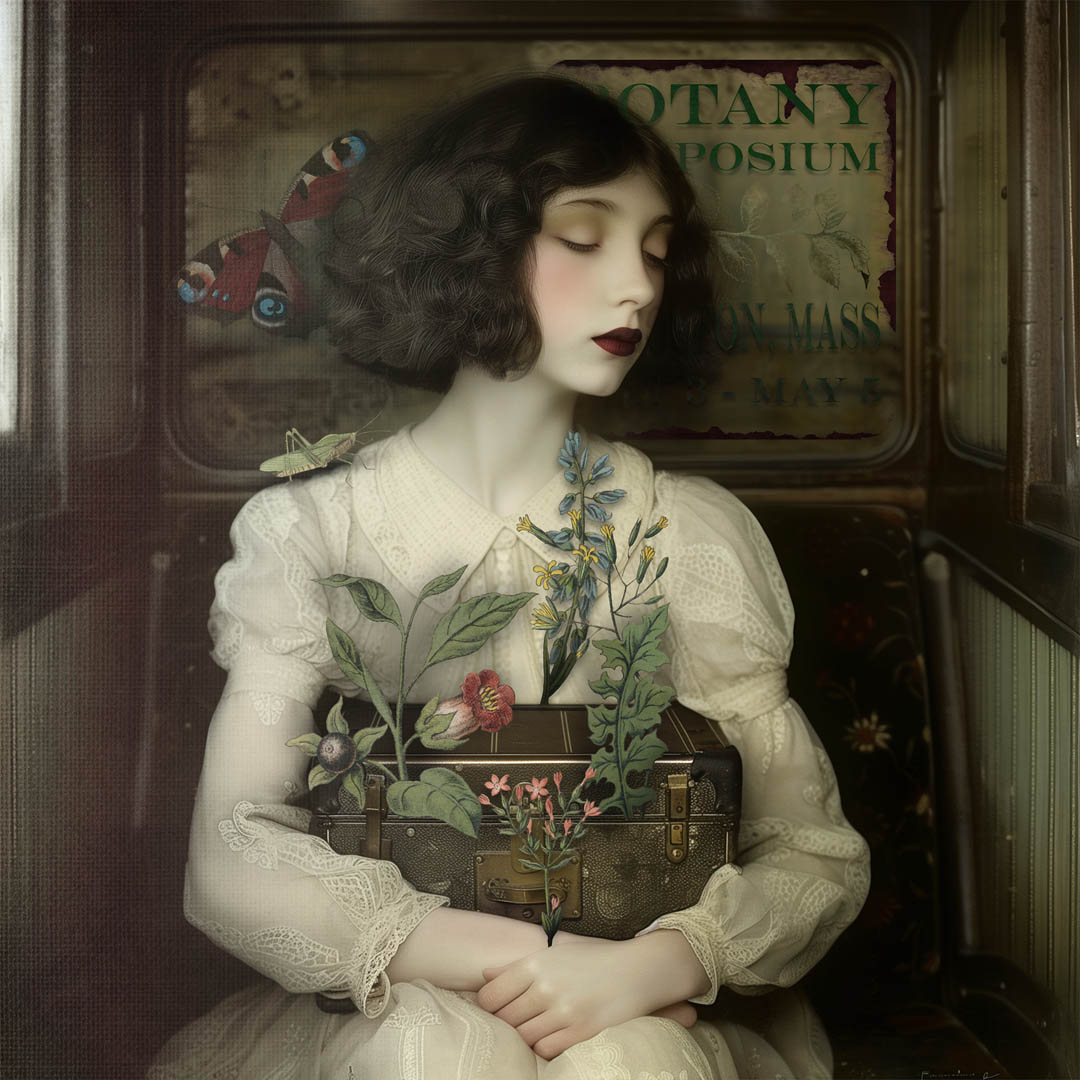
I’ve worked with Midjourney from v4 through v6.1, and the changes in output are so dramatic!
Midjourney is pretty much everything to me at this point. I'm not a traditional artist - I don't draw or paint. I can overpaint some aspects of my images, but it's just not my real strength. Photography is a possibility, but not very appealing right now. I'm so happy to have found this way to express myself artistically.
I've worked with Midjourney from v 4 through v 6.1, and the changes in output are so dramatic! I can't wait to see what happens next! I do hope there will be more work on the cref feature that permits illustrators to carry a character through a storyline. But I'm sure that's coming. Apart from that, I'm just waiting to see what's in the pipeline. I'm sure it will be a pleasure to work with.
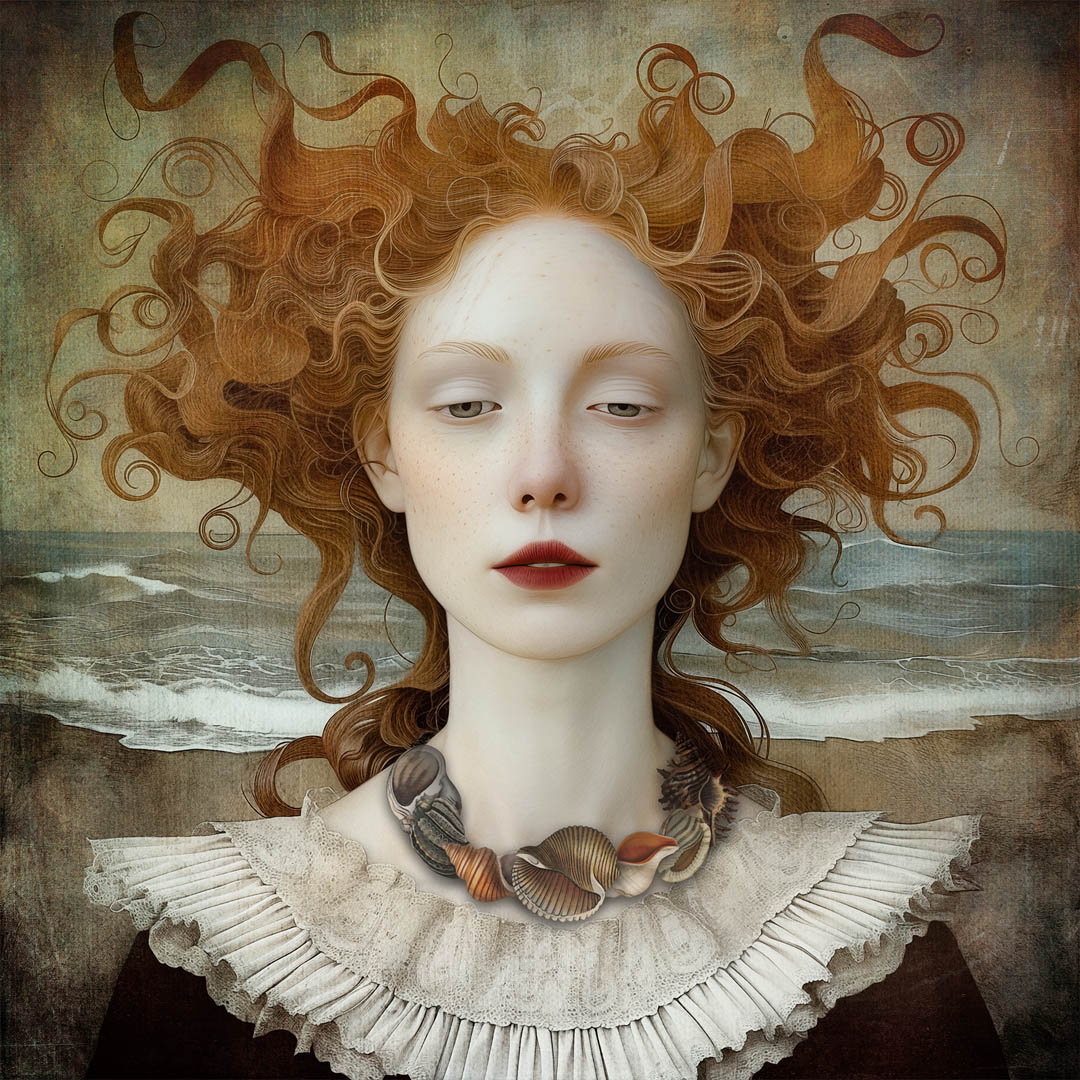
As I mentioned, I am working on a book project, but still can't talk much about it due to contractual obligation. I hope to illustrate more books. I'm totally open to exhibitions, but I live out in the sticks (!) and don't really have a huge artistic community nearby. Virtual exhibitions would be great. I scan various internet sites for open calls when I have the time.
I don't agree that AI is not "art." I think every time there has been a sea-change in the art world (photography, impressionism, abstract art) there have always been detractors. If we listened to them, there would never have been a Van Gogh. I think the artist who uses AI art - and *really* uses it, not just making something pretty and leaving it at that - is using a new technological tool that is here to stay. Let's celebrate that, and find a way to make it the most innovative tool we can.
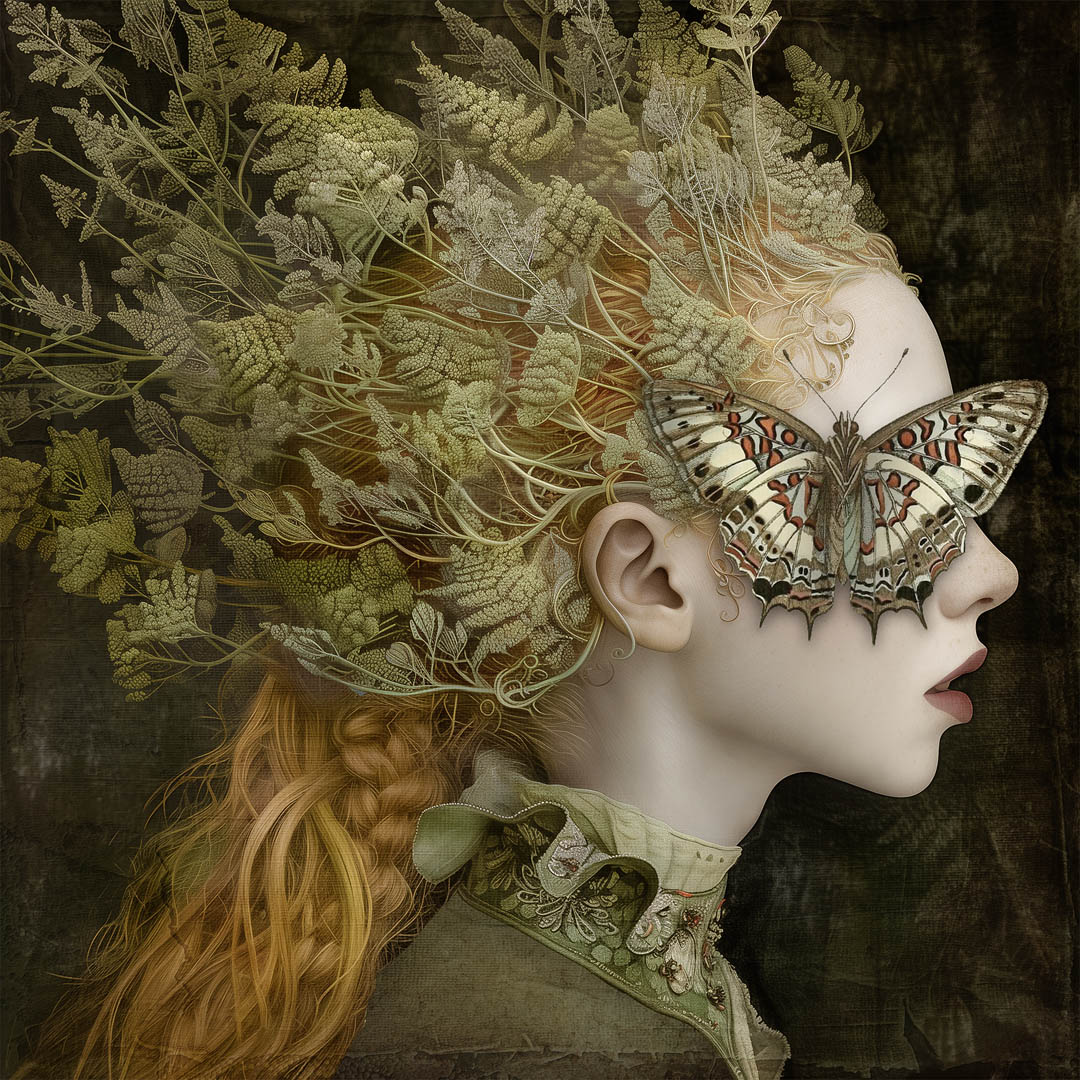
Recently someone on Instagram commented about one of my pieces, “Ugh. AI is everywhere.” Actually, it is. It's here to stay. It's not different from most other technological advancements, such as photography. In the hands of someone who really wants to make art it can be a remarkable asset. We all know of people who just put together something pretty and call it their own. Real AI artists are not doing that. They work at what they do in the same way that other artists through the centuries have worked. Some of the most innovative things I've seen artistically in the last couple of years have been generative art - things that leave me breathless. People are doing amazing things.
That's a really important issue. To me, post-work is an important part of that - making sure that the work is your own in your own special way. I like to use a lot of collaging and texturing. Sometimes the piece really can just stand on its own, but I still like to tweak it a bit in my own style. It's not really mine until I've done something extra to it.
I did that once! It was fun. I was working with an artist whose style has always intrigued me but is very different from mine. It was a pretty smooth experience, and I was happy with the outcome. I'm open to doing it again. It's a good way to grow.
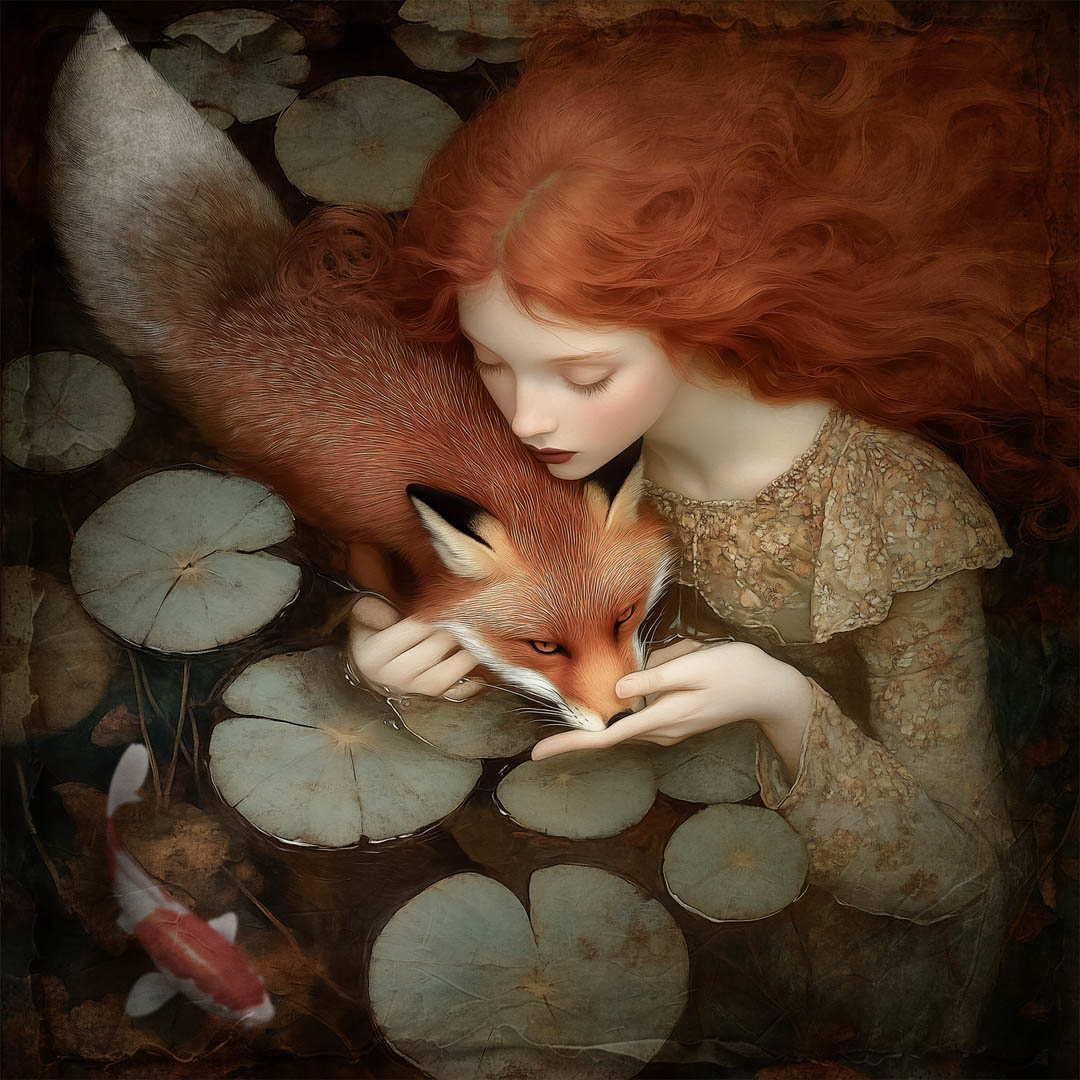
I guess I engage with the Midjourney community mostly through Instagram. I think it's always beneficial to see what other people are doing, and I usually do some searches once a week or so.
Take some online classes. Invest in the best Midjourney plan you can afford and spend a lot of time with the system. Find your own voice. Know what you want to do and how you want to do it.